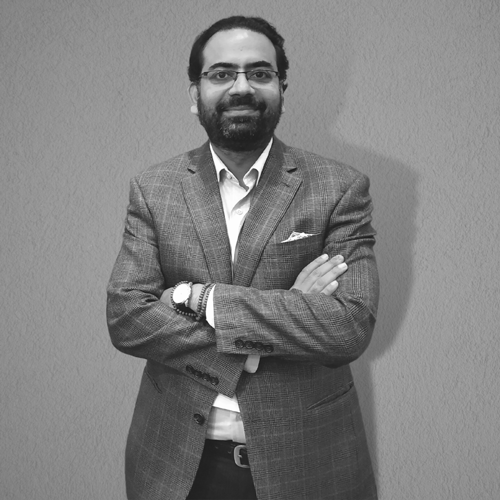

Author
Pushpinder Bhatia
Alumni Said Business School, University of Oxford, UK
The Dilemma Of An Admission Seeker
Only students who score 100% need apply
The requirement of a perfect score - 100% - to get admission into one of India's leading colleges has highlighted the severe shortage of good quality higher education institutions in the country.
It has also highlighted the problems of the school leaving examinations across India, where students who score 90% and above are unable to get admission into the top colleges of the country.
Leading colleges of the country set a cut-off (minimum marks required to be eligible for admission) of 100% for students. Anything less than a perfect score would disqualify them. The move has not only left students outraged, it has also sparked a debate about access and quality in higher education.
The number of top performers has also gone up, creating pressure on the handful of quality institutions across the country. The number of students with over 90% marks from the Central Board of Secondary Education is nearly 22,000, up from about 17,000 last year. Among these top bracket students, those with over 95% marks have shot up from about 1,200 last year to over 2100 this year.
Trends over the past five years show that the number of students getting over 90% marks has exploded from just 5,412 in 2006 to 21,665 this year. Those with over 95% have increased from an exclusive club of 199 students in 2006 to 2,097 this year.
When there are a limited number of quality institutions and the number of aspirants is increasing, the cut-off for admission has to be high. We need more universities and colleges so that students have more choices. The now-disbanded National Knowledge Commission had suggested as far back as 2007 that India needed another 1,500 universities.
The shortage of colleges means that despite roping in private players, and boosting the distance education system, only one in ten of the relevant age group (18-24 years old) manages to get into any institution of higher education. This means that over 85% of India's youth is unable to access higher education. Compare this to the world average of 23%, the developing country average of 36.5% and an advanced country average of 45%.
The government has created 12 new central universities in the last two years. But it will be years before they can establish themselves and attract the best students. Meanwhile, state universities are suffering due to lack of funds, shortage of teachers, and lack of academic innovation. So the best students shy away from these universities and make a beeline for the handful of good institutions that the country has.
Students have also highlighted the average infrastructure in many of the leading colleges and universities across India.
Shukla Benerjee, who studied at London Metropolitan University for a year as an exchange student, said: “I did my undergraduate from Jadavpur University in Kolkata, and am applying for a postgraduate at Delhi University. The truth is that both universities have an average infrastructure. The classrooms are nothing great; hostels are less than average and facilities for students is lacking. Even our best do not compare to average universities in the West."
Many of the hallmarks of a world-class institution such as an extensive library network, cafeterias for students, work room for teachers, Wi-Fi enabled campus, clean toilets, and lounges are absent in a majority of colleges and universities across India.
The lack of quality and shortage of seats is a major reason why many students prefer to study abroad. In 2009, the number of Indian students in the US crossed 100,000. "The government is trying its best to create capacity. But higher education has been ignored and underfunded for a long time.
A 100% cut-off is a reflection of an urgent need for capacity building in higher education.
To know more visit at mapmystudy.com
Latest Study Abroad Blog
- Want to Study at Oxford? Admission Requirements, Eligibility, Courses, Fees & Scholarships for Indian Students
- What Are the Top Paying Part-Time Jobs in the UK for 2026?
- 12 Cheapest Countries to Study Abroad for Indian Students in 2026
- Top 10 Study Abroad Consultants in India: Helping You Fly High in 2025
- Study Hotel Management & Culinary Arts in Japan | Top Programs for International Students
- Monash University for Indian Students – Complete Guide to Admissions, Courses, Scholarships, Fees & Campus Life
- India Upgraded to level 2 for Australian Student Visa
- Dreaming of Stanford? Here’s How Indian Students Can Join Stanford University – Admissions, Courses, Fees & Career Opportunities
- Study at Yale University from India – Step-by-Step Admission Process, Eligibility, Scholarships & Student Life Explained
- How Indian Students Can Get Into MIT – Complete Guide to Admissions, Courses, Fees & Life at Massachusetts Institute of Technology
- Dreaming of Harvard? Step-by-Step Guide for Indian Students to Study at Harvard University
- Study in Europe in 2025: Top Universities, Courses, Fees, and Scholarships
- South Korea - Emerging study abroad destination for Indian students in 2025
- Study Abroad: How much bank balance is required for USA Student Visa?
- Study in the UK: Pursuing a Master's Degree in Psychology in the UK in 2025
- Nurturing the future: How Career Counselling can help your child choose the right career?
- Study in UK: A Detailed Guide on How to Secure Admission in the UK Without IELTS
- Top 10 Reasons to Choose Ireland as Your Study Destination: Exploring the Benefits of Studying in Ireland
- Secure your Child’s Education: Importance of right guidance and counselling in a student's life
- MS in Business Analytics in Australia: Best Colleges, Courses, Fees, and Requirements


